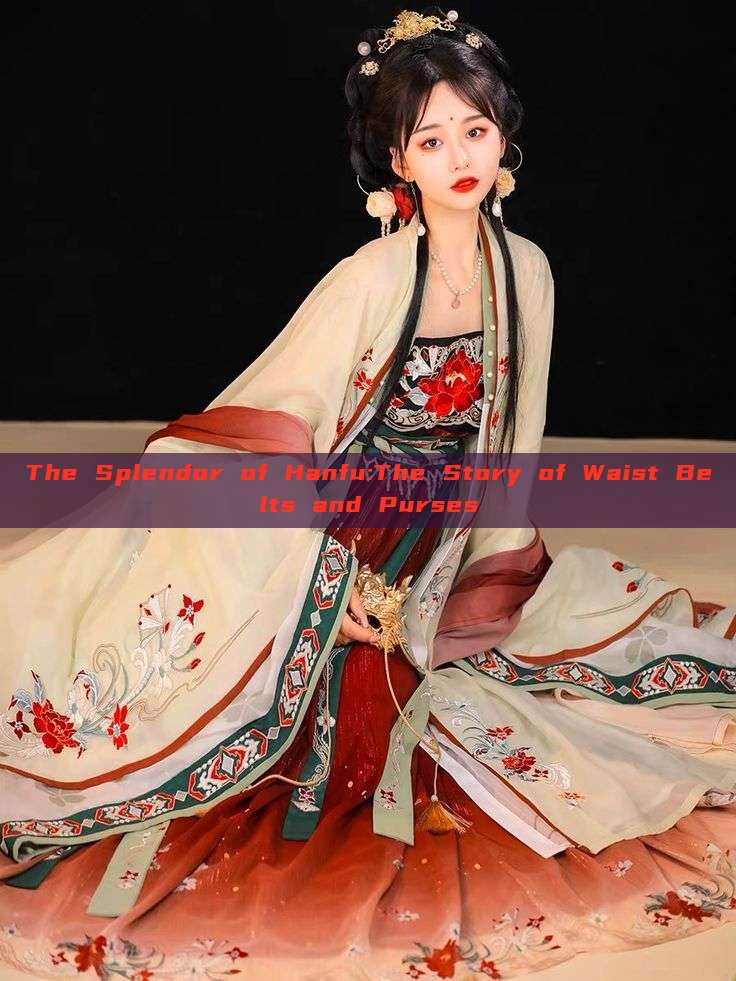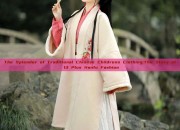The Splendor of Hanfu:The Story of Waist Belts and Purses
In The depths of Chinese history, the art of traditional clothing has always been a vibrant expression of culture and identity. Among the numerous styles of traditional Chinese clothing, Hanfu stands out as a symbol of elegance and cultural heritage. One of the most distinctive features of Hanfu is the waist belt and purse, which not only served as practical accessories but also as symbols of status and beauty.

The waist belt of Hanfu, often referred to as '腰佩', is a vital component of this traditional clothing. It is more than just a piece of cloth wrapped around the waist; it is an embodiment of craftsmanship and cultural significance. Made from various materials like silk, cotton, or even precious metals, the waist belt served as a decorative element that added elegance to the wearer's appearance.
The design of the waist belt was highly intricate and often featured intricate patterns and symbols that reflected the wearer's status and beliefs. These patterns ranged from simple geometric shapes to complex animal and plant designs, each symbolizing different meanings and cultural values. The use of colors was also significant, with each color representing different emotions and symbolism.
Accompanying the waist belt was the purse, known as '荷包' in Chinese. The purse not only served as a practical container for carrying items like coins or small treasures, but it also served as a decorative accessory that matched the elegance of the waist belt.
The purse was often made from the same material as the waist belt and featured similar patterns and designs. They were often shaped like small pockets or bags and were often decorated with intricate embroidery, beads, or other embellishments. The purses often held personal items like money, small jewelry, or even personal letters, making them highly significant objects that carried both practical and emotional value.
During the Ming and Qing dynasties, the waist belt and purse became even more popular, with a wide range of styles and designs catering to different social classes and tastes. The wealthy often wore waist belts made from precious materials like jade or gold, while the common people wore simpler designs made from cotton or silk. The purses also reflected the wearer's status and preferences, with intricate designs and embroidery often found on those worn by the affluent.
The waist belt and purse were not just accessories; they were a reflection of one's identity, status, and culture. They were passed down through generations, often carrying family histories and traditions. The craftsmanship involved in making these accessories was highly skilled and involved generations of knowledge and expertise.
Today, while modern clothing has taken over most aspects of fashion, the traditional Hanfu waist belt and purse still hold a special place in the hearts of many. They are seen as symbols of cultural heritage and are often worn during festivals or special events as a way to revive traditional culture.
In conclusion, the waist belt and purse of Hanfu are not just pieces of clothing; they are a testament to the rich cultural heritage of China. They reflect the craftsmanship, status, and identity of the wearer and serve as a connection to the past. As we look towards the future, it is important to remember and preserve these symbols of our cultural heritage, so that future generations can continue to learn about and appreciate their rich history.
Related Recommendations
-

The Dominating Beauty in Traditional Hanfu:The Story of a Fierce汉服女
-

The Splendor of Traditional Chinese Childrens Clothing:The Story of 13 Plus Hanfu Fashion
-

The Splendor of Hanfu:The Wide Sleeve Style of the Jin and Wei Dynasties
-

Evas Journey into Traditional Chinese Clothing:The Evolution of Hanfu


